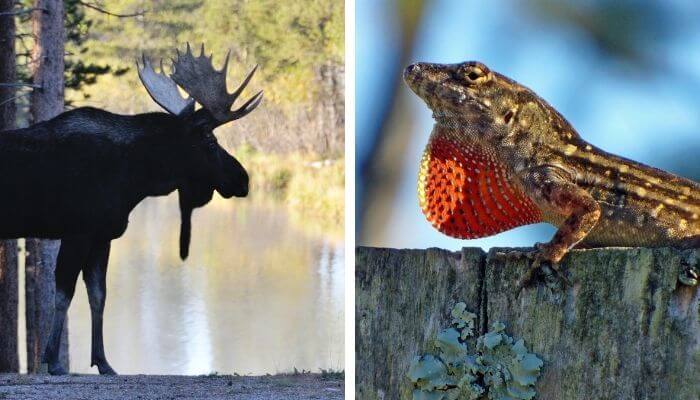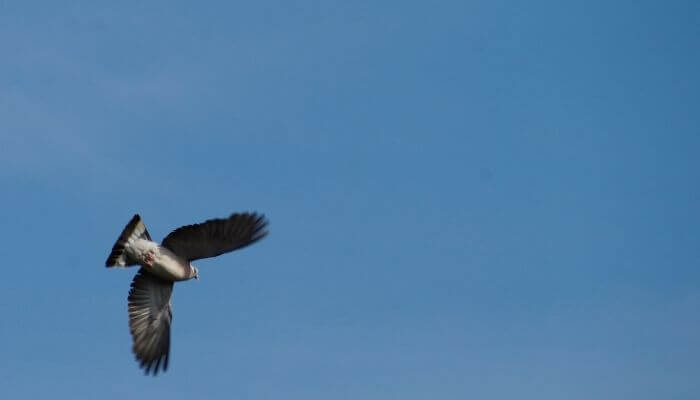Originating from the Middle East, this breed is so-called because of their most distinguishing feature – the dewlap that extends from the underneath of their beaks to their throats.
What Is A ‘Dewlap’?
A dewlap is a flap of skin which is usually beneath the jaw or part of the neck. Dewlaps are not unique to the Dewlap pigeon, nor is it unique to birds.
Other animals with dewlaps include dogs (such as mastiffs, Bassett hounds, English bulldogs, Bloodhounds, and the Chinese Shar-pei), moose, and most notably, the Zebu cattle of India where the dewlap is known as briefcase folds and can be very prominent. Some reptiles also have dewlaps.

In some avian species, such as turkeys, it is a pendulous mass of skin that hangs down under the bird’s throat.
Scientifically, it is called a caruncle, which also covers other types of appendages called wattles, combs, and snoods. In some cases, these are purely ornamental additions, but dewlap colour may also indicate the good health of a bird.
Dewlaps and other types of appendages are used to attract sexual mates during mating seasons. Vibrant colours signal good health and strong genes.
Origins Of The Dewlap Pigeon
This breed originates from the Middle East and has various sub-breeds.
Adana is the most common sub-breed because that is the region in Turkey where it is believed they originally came from.
Apart from Adana Dalici Guvercini they are also known as Syrian, Beyrouth, Beirut, Turkish and Egyptian dewlaps – as you can see, the names relate to their geographical locations.
This type of pigeon has been spread all over the Middle East by avid pigeon fanciers.
There are several sub-species in Iraq and Iran that go under the names of Reehani, Basrar, and Mfattle.
Dewlap pigeons were first recorded back in the 17th century.
Ancient societies regarded them as messengers to the Gods.
Dewlaps are a pure breed that hasn’t obtained their characteristics or appearance through cross-breeding. In the past, they were used as utility pigeons.
Dewlap Pigeon Appearance
Dewlaps are slim birds with very small, rounded heads and very short beaks, they are usually heavier than other breeds.
They have very long necks.
The purebreds have green eyes.
Dewlaps come in different colours of plumage.
They can be black, white, blue, red or checkered.
Some have a white spot above their beaks. Others have white spots on either side of their heads that are called ‘earrings’. Spots around the throats on some are called ‘necklaces’.
One particular type which displays the characteristics of the Dewlap boldly and attractively is the Syrian Tarbesh.
Known as the Abu Abse Wammentaube which can be literally translated as black, crested (or crowned) Dewlap pigeon. It has intensely black plumage with a tremendous iridescent sheen, green eyes, unique crests, and 14-24 tail feathers.
Dewlaps Love To Dive
Dewlaps are noted for their diving abilities.
They are strong flyers, but it is diving ability that amaze their keepers.
These birds give their owners heart-stopping moments because they can plummet from +400m to the ground at high speeds and land on their feet without any braking manoeuvers.

Their wings are tucked into their body as they dive, making them look streamlined and very impressive. If you were able to get close enough to them in a dive, there’d undoubtedly be a whooshing sound as they hit top speed.
They have been known to out-dive birds of prey like the peregrine falcon.
Dewlap pigeons make excellent show and performance birds but are considered hard to train. Although intelligent birds, like most pigeons, it takes a lot of patience to train them to comply with commands.
One of the issues in training is that they don’t have the great homing sense other breeds have.
Summary
If you are looking for something unique for show or performance purposes, these elegant pigeons may well fit the bill, but understand it will take a lot of time and effort to get them to perform as you wish.
One dewlap breeder in the United States lamented the fact that there wasn’t much interest in these birds there because many owners and breeders aren’t willing to commit the necessary amount of time to train them.
